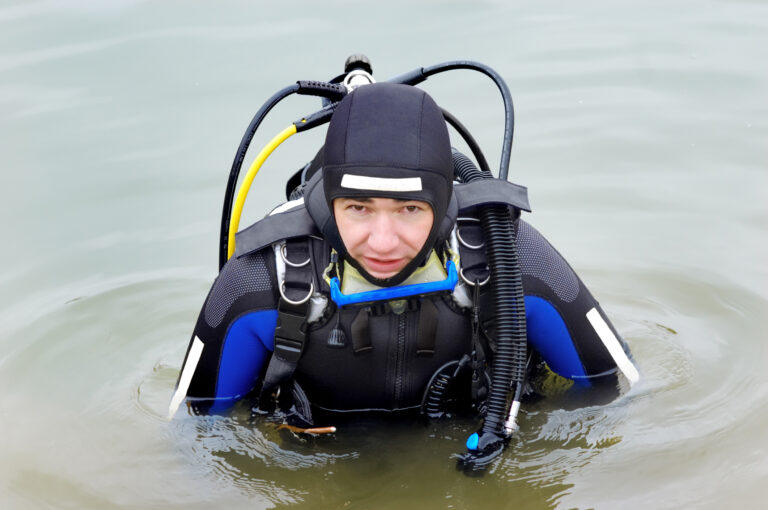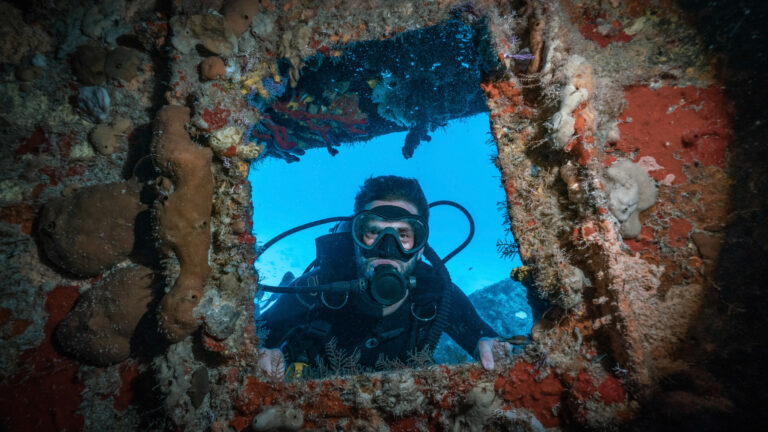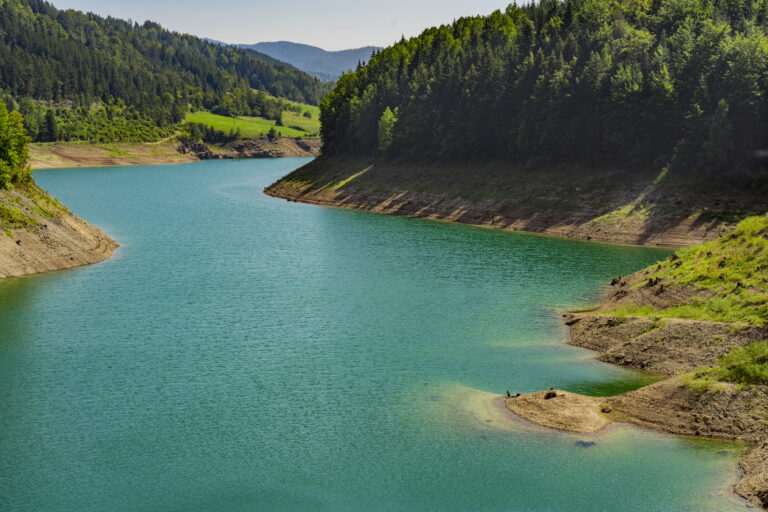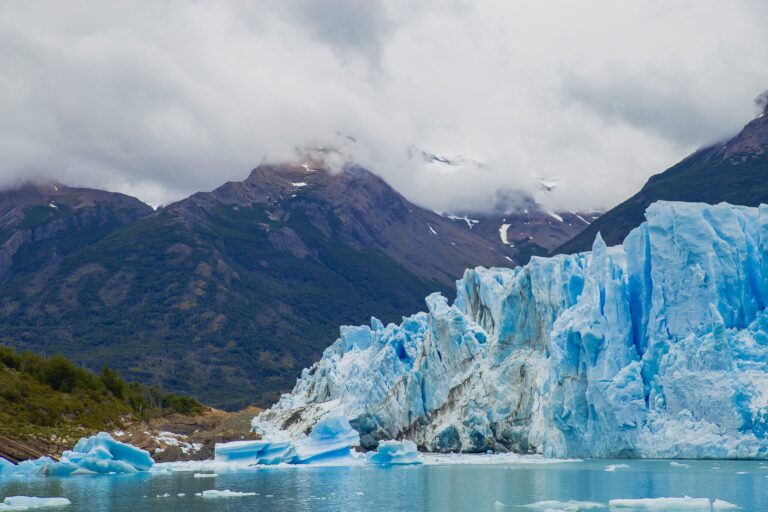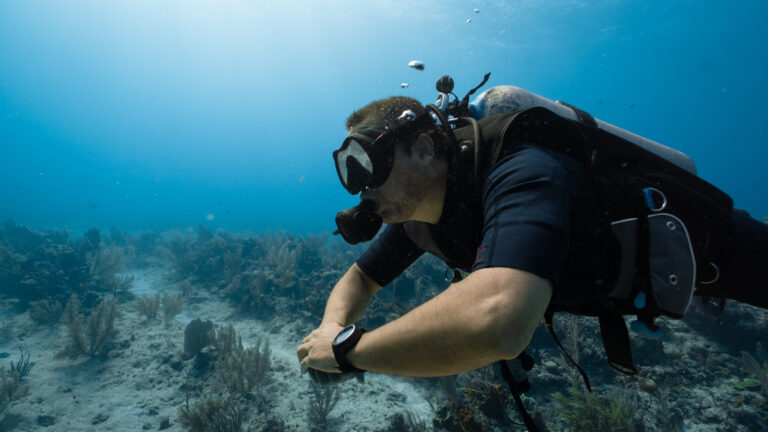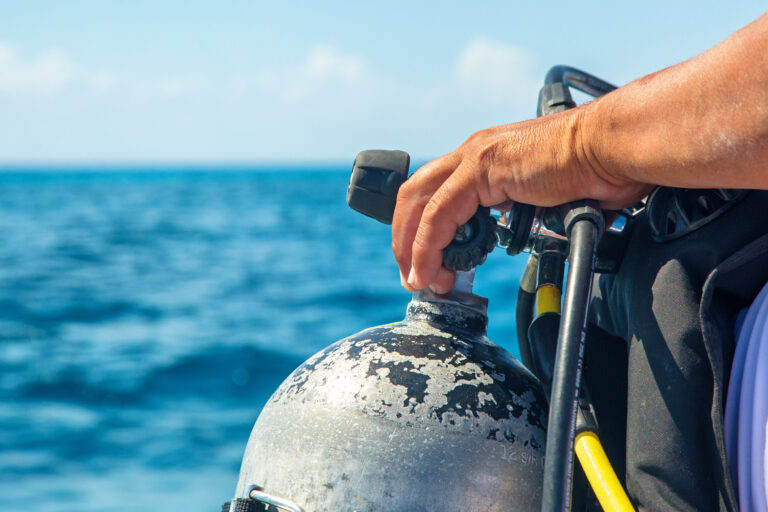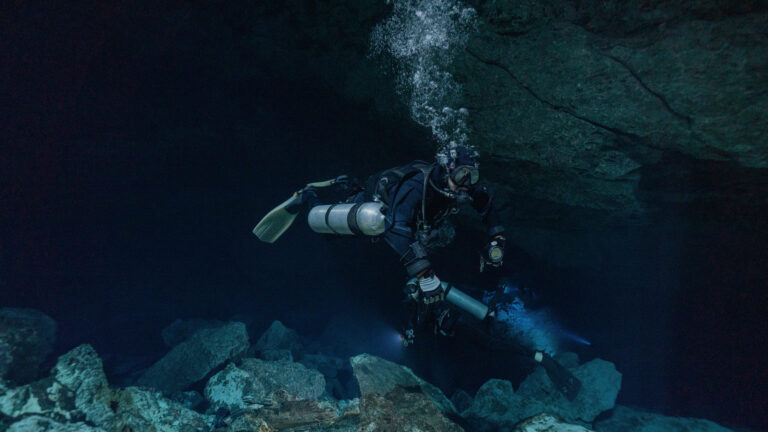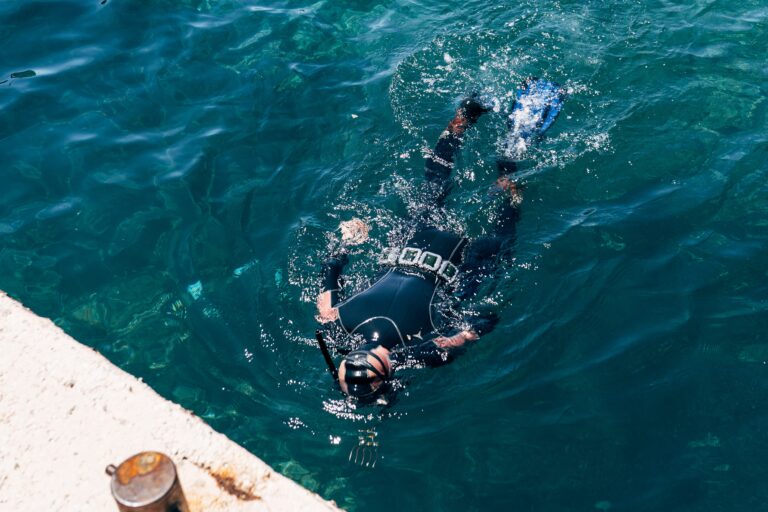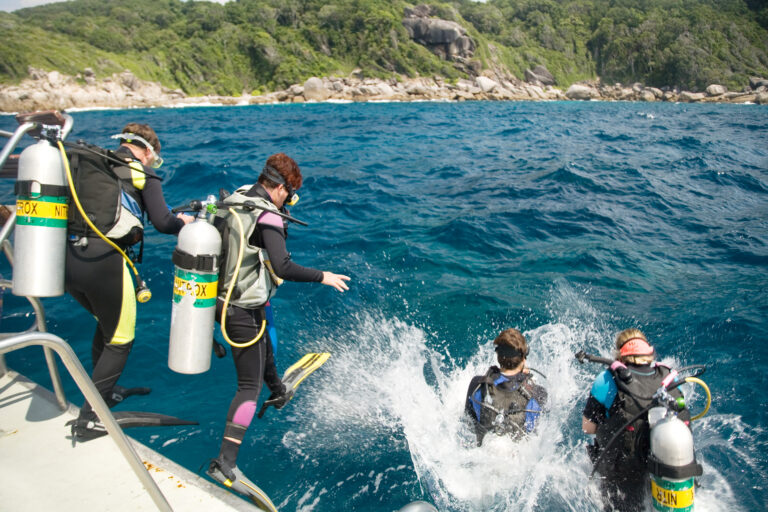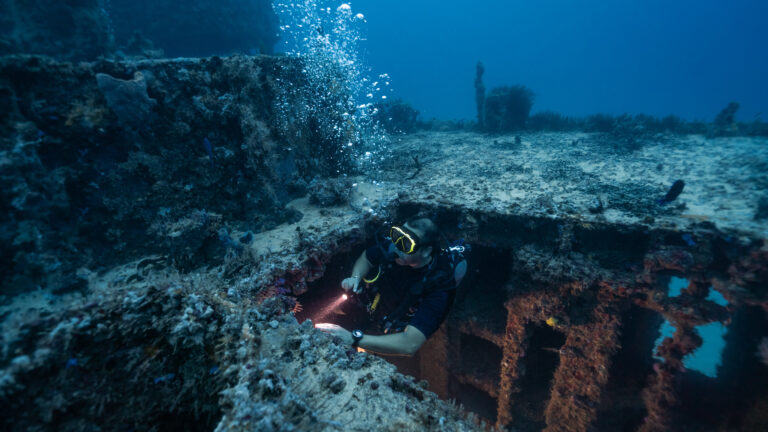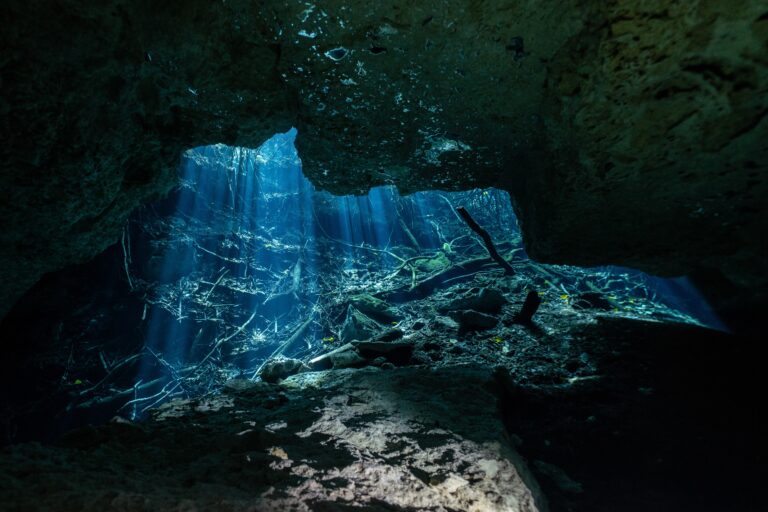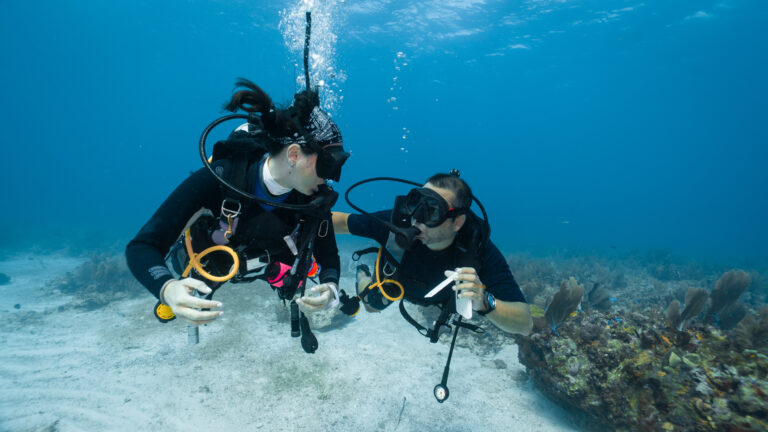Scuba Divers’ Travel Guide to Europe
Europe is a treasure trove of scuba diving opportunities, with a diverse range of underwater environments to explore. From the warm waters of the Mediterranean to the rugged coastlines of the North Sea, Europe offers an abundance of dive sites for all levels of experience. Whether you’re interested in exploring colorful coral reefs, discovering sunken ships, or swimming with schools of fish, Europe has something for everyone. With its rich history and stunning natural beauty, Europe is a top destination for scuba diving enthusiasts.
Diving Destinations in Europe
Europe in a Nutshell
Europe, a continent situated in the northern and mostly eastern hemispheres, forms the western extremity of the larger Eurasian landmass. It shares this continental territory with Africa and Asia, collectively known as Afro-Eurasia. Europe’s boundaries include the Arctic Ocean to the north, the Atlantic Ocean to the west, the Mediterranean Sea to the south, and Asia to the east. The demarcation between Europe and Asia is traditionally drawn along the Ural Mountains, Ural River, Caspian Sea, Greater Caucasus, Black Sea, and the Turkish Straits.
Spanning approximately 10.18 million square kilometers (or 3.93 million square miles), Europe occupies about 2% of the Earth’s surface and 6.8% of its land area. This makes it the second smallest of the seven recognized continents. Politically, the continent comprises around fifty independent nations, with Russia being the largest in terms of area and population. As of 2021, Europe had a total population of approximately 745 million, representing about 10% of the global population. Europe is known for its varied climate, influenced significantly by warm Atlantic currents which moderate both winters and summers across much of the continent. Inland areas, however, experience more pronounced seasonal variations.
Culturally, Europe is acknowledged as the cradle of Western civilization, deeply rooted in the ancient civilizations of Greece and Rome. The decline of the Western Roman Empire in 476 CE, alongside the subsequent Migration Period, marked the end of ancient European history and the beginning of the Middle Ages. The Renaissance, originating in Florence, Italy, initiated a period of revival in arts, humanism, exploration, and science, signaling the onset of the modern era. Europe’s prominence in global affairs began during the Age of Discovery, spearheaded by Spain and Portugal, leading to extensive explorations and conquests worldwide. From the 16th to the 20th centuries, European nations colonized large parts of the Americas, Africa, Oceania, and most of Asia.
The Age of Enlightenment, the French Revolution, and the Napoleonic Wars significantly shaped Europe’s cultural, political, and economic landscape from the late 17th to the early 19th centuries. The Industrial Revolution, starting in Great Britain, brought about profound changes in the economy, society, and culture, influencing not just Europe but the entire world. Europe was the primary theater for both World Wars, which contributed to a shift in global dominance away from Western Europe towards the Soviet Union and the United States by the mid-20th century. The Cold War era saw Europe divided between the NATO-aligned West and the Warsaw Pact-aligned East, culminating in the Revolutions of 1989, the fall of the Berlin Wall, and the dissolution of the Soviet Union.
In the realm of international politics, Europe is represented by two key organizations: the European Union (EU) and the Council of Europe. Founded in 1948, the Council of Europe aimed to foster unity and prevent future conflicts. The European Union, evolving from a series of integrative steps among certain European states, operates as a unique political entity, somewhere between a confederation and a federation. Originating in Western Europe, the EU expanded eastward after the collapse of the Soviet Union in 1991. A majority of EU member states have adopted the euro as their common currency and participate in a unified European market and customs union. The Schengen Area, encompassing many EU countries, has abolished internal borders and immigration controls. The EU also holds regular elections every five years, ranking as the second-largest democratic exercise globally, following India.
Location and Geography
Europe offers a diverse range of scuba diving experiences thanks to its unique geographical spread. From the clear, warm waters of the Mediterranean Sea to the mysterious wrecks in the colder North Sea, the continent boasts a variety of underwater environments. The Mediterranean, shared by southern European countries like Greece, Italy, and Spain, is known for its rich history and vibrant marine life, offering an exceptional blend of natural and archaeological wonders. To the north, countries such as the United Kingdom and Norway present challenging yet rewarding dives with their rugged coastlines and rich maritime history. The Atlantic coasts of countries like Portugal and Ireland add another dimension with their unique oceanic fauna and flora. This geographical diversity ensures that whether you are a beginner or an experienced diver, Europe has a location that will cater to your interests and skill level.
Visa and Entry Requirements
When planning a scuba diving trip to Europe, it’s important to understand that visa and entry requirements vary considerably across its diverse nations. For non-European Union (EU) travelers, a Schengen Visa may be necessary for countries within the Schengen Area, allowing access to multiple countries with a single visa. However, always check specific requirements for each country, as nations like the United Kingdom and Ireland are not part of the Schengen Agreement. EU and European Economic Area (EEA) citizens typically enjoy freedom of movement across member states. It’s crucial to ensure your passport has at least six months of validity beyond your planned departure date from the Schengen Area. Additionally, some countries may have specific entry requirements related to health, such as vaccinations, which can change frequently. Always consult the embassy or consulate of your destination country well in advance to stay updated on the latest entry requirements and travel advisories.
Best Time to Visit
The best time to visit Europe for scuba diving varies significantly across its diverse regions. In the Mediterranean, the ideal months are from late May to September when the water is warmest and visibility is at its peak, perfect for exploring the rich underwater life and historic wrecks. Northern Europe, including destinations like Iceland and Norway, offers a different experience; the prime time is during the summer months, from June to August, when the water temperatures are more tolerable and the days are longer, providing ample daylight for exploring unique underwater landscapes and marine life. However, for those interested in ice diving, winter months are preferable in these northern regions. The Atlantic coasts of Europe, such as the Azores and the Canary Islands, provide year-round diving opportunities with varying seasonal highlights, making them a versatile choice for divers looking to experience different marine environments. Each destination within Europe offers its own unique set of conditions and marine sights, making it essential for divers to consider their preferences and experience levels when planning their trip.
Accommodation Options
In Europe, scuba divers are treated to a diverse array of accommodation options, catering to various preferences and budgets. From the sun-drenched coasts of the Mediterranean to the rugged, fjord-lined shores of Scandinavia, divers can choose from luxury seaside resorts, quaint coastal bed and breakfasts, eco-friendly dive lodges, and even liveaboard boats that offer the convenience of sleeping over the waves they explore by day. In popular diving destinations like the Greek Islands, Spain’s Canary Islands, and the azure waters of Malta, divers often find accommodations that specialize in diving services, providing gear rentals and organizing boat dives. For those seeking a more immersive experience, dive-centric accommodations in places like Croatia and the Azores offer packages that include multiple dives and opportunities for underwater photography workshops. Whether one prefers the charm of a small village inn in Italy or the all-inclusive experience of a resort in Cyprus, Europe’s range of accommodations ensures that every diver, regardless of skill level or interest, finds a comfortable and convenient base for their underwater adventures.
Transportation Within the Country
In Europe, transportation options for scuba divers are as diverse as the continent itself. Efficient public transportation systems like trains and buses interconnect major cities and coastal towns, making it easy to access renowned diving spots. For more remote dive sites, renting a car can provide the flexibility needed to explore hidden underwater gems at your own pace. In countries with extensive coastlines, such as Greece or Italy, ferries are a popular choice for island hopping, offering an opportunity to discover multiple diving destinations. Additionally, some regions offer specialized dive charters or boats, catering specifically to scuba enthusiasts seeking to explore offshore reefs and wrecks. With a range of transportation choices, divers can seamlessly combine their underwater adventures with the cultural and scenic richness of Europe.
Currency and Payment Methods
In Europe, the predominant currency used for transactions in many countries is the Euro (€), particularly within the European Union. However, it’s important to note that several European countries, such as the United Kingdom, Switzerland, Norway, and others, still use their own currencies, like the British Pound (£) and Swiss Franc (CHF). For scuba diving enthusiasts, most established dive centers and operators in Europe accept major credit and debit cards, although smaller or more remote locations may prefer or only accept cash. Therefore, it’s advisable to carry a mix of cards and some local currency. Additionally, while ATMs are widely available in urban areas, their presence might be limited in secluded dive spots, so it’s prudent to withdraw cash in advance. Always be aware of any foreign transaction fees your bank may impose and the possibility of varying exchange rates. Digital payment platforms like PayPal are also increasingly accepted, offering a convenient and secure method for settling payments.
Language and Communication
In the diverse and multilingual landscape of Europe, effective communication while scuba diving transcends linguistic barriers. English often serves as a common language among divers, but learning basic phrases in the local language of your destination, such as French in the Mediterranean parts of France or Spanish in the Canary Islands, enhances the overall experience. More crucially, all divers must be proficient in the universal language of diving – hand signals. These non-verbal cues, standardized across the diving community, are vital for safe and clear underwater communication. Whether it’s signaling distress, low air, or a point of interest like a hidden octopus in a Grecian cove, mastering these signs ensures a seamless and enjoyable dive. Embracing this blend of local tongues and silent underwater gestures not only fosters safety and camaraderie among divers but also enriches the cultural immersion of diving in Europe’s waters.
Local Culture and Attractions
Scuba diving in Europe offers a rich tapestry of cultural and historical attractions, blending the thrill of underwater exploration with the diverse heritage of the continent. From the sun-kissed Mediterranean shores to the rugged coasts of the North Sea, each dive site is not just about the marine life, but also about immersing oneself in local traditions and history. In Spain, divers can surface to the rhythms of flamenco and explore Moorish architecture, while in Greece, ancient ruins and tales of mythology await. Italy’s blend of Renaissance art and sumptuous cuisine complements its underwater Roman relics, and in the colder waters of Scandinavia, divers can experience the stark beauty of fjords before delving into Viking history. This unique combination of breathtaking dives and cultural enrichment makes Europe a quintessential destination for divers seeking more than just underwater adventures.
Cultural Etiquette and Tips
In Europe, scuba diving offers a unique blend of diverse cultures and customs, making it crucial for divers to respect local traditions and environmental norms. When diving in European waters, always prioritize eco-friendly practices like avoiding contact with marine life and not disturbing underwater habitats. Be aware that some regions may have specific regulations or protected areas, so it’s important to stay informed and comply with these rules. Communication is key, so learning a few phrases in the local language or using universal diving signs can greatly enhance interactions with local dive operators and fellow divers. Additionally, European dining and social customs may differ from your own, so embracing local etiquette, whether it’s a post-dive meal in a seaside Greek taverna or a respectful silence in Scandinavian saunas, enriches the overall experience. Remember, showing respect and open-mindedness towards local customs not only ensures a more authentic and enjoyable dive but also fosters positive relationships between the diving community and the host culture.
Local Laws and Regulations Relevant to Tourists
Scuba diving in Europe offers a diverse range of experiences, but it’s essential for tourists to be mindful of local laws and regulations, which can vary significantly across different countries. In most European nations, scuba divers are required to hold a recognized certification, such as PADI or SSI, with specific locations mandating a minimum level of expertise, especially for challenging dives. Environmental protection laws are stringent, with heavy penalties for damaging marine life or historical underwater sites. Many countries, like Greece and Italy, have regulations regarding diving near archaeological underwater sites, often requiring special permits. It’s also common for dive sites to be regulated by local authorities, who may restrict the number of divers per day to protect delicate ecosystems. Tourists should always check the specific regulations of the country they are visiting and adhere to the guidelines set by local dive shops and dive masters to ensure a safe and legal diving experience.
Safety Tips and Emergency Contacts
When scuba diving in Europe, safety should always be a top priority. Before embarking on your underwater adventure, ensure you are well-versed in local diving regulations and have a clear understanding of the dive sites you plan to visit. It’s crucial to check your equipment thoroughly and be familiar with its operation, as well as to dive within your certification limits. Always dive with a buddy and maintain good communication, both underwater and with those on the surface. Be aware of the local marine life and environmental conditions, such as currents and visibility, which can vary significantly across different European waters. In case of an emergency, it is essential to have the contact details of the nearest hyperbaric chamber, local emergency services, and the coast guard. Additionally, carry a dive insurance policy that covers medical treatment and evacuation. Remember, the key to a safe and enjoyable diving experience in Europe lies in preparation and respect for the underwater environment and its unique challenges.
Health and Travel Insurance
When planning a scuba diving trip to Europe, it is crucial to consider health and travel insurance carefully. Europe’s diverse range of scuba diving experiences, from the clear waters of the Mediterranean to the unique underwater environments of the Nordic fjords, can present various challenges and risks. Therefore, divers should ensure their insurance covers scuba diving-related incidents, as standard policies might not. Look for policies that offer coverage for dive equipment loss, emergency medical evacuation, and hyperbaric treatment, if needed. It’s also wise to check for coverage limits and exclusions, particularly related to depth and certification level. Additionally, since healthcare policies and access vary across European countries, it’s important to have a comprehensive travel health insurance that provides adequate coverage in case of non-diving related medical emergencies. Always carry proof of insurance and understand the procedure for making a claim, so you can dive into Europe’s waters with peace of mind, knowing you’re well protected.
Dive Operators and Dive Shops
In Europe, the landscape of dive operators and shops is as diverse and varied as the continent itself, offering options for every level of experience and preference. From the warm, clear waters of the Mediterranean to the mysterious wrecks in the colder North Sea, European dive shops cater to a wide range of interests. Operators in popular destinations like the Greek Islands, the Spanish coasts, and the French Riviera often specialize in beginner-friendly dives and PADI-certified training courses. In contrast, countries like Norway and Iceland, known for their unique underwater landscapes, attract more experienced divers seeking adventure in challenging conditions. These shops typically provide advanced equipment, including dry suits and specialized gear for cold water diving. Many European dive operators also focus on eco-friendly practices, emphasizing the importance of preserving the stunning underwater ecosystems. Language is seldom a barrier; most dive shops offer services in English and other major European languages, ensuring a welcoming experience for divers from around the globe. Whether you’re looking to explore historic wrecks, vibrant coral reefs, or dramatic underwater cliffs, Europe’s dive operators and shops are equipped to provide unforgettable experiences.
Packing List for Scuba Diving in Europe
Scuba diving in Europe offers a unique experience, with diverse underwater landscapes and marine life. From the clear waters of the Mediterranean to the historic wrecks in the North Sea, every dive site presents its own set of wonders. However, to fully enjoy these underwater treasures, it’s essential to be well-prepared. This chapter provides a comprehensive packing list tailored for scuba diving trips across various European destinations.
Core Scuba Diving Gear
- Wetsuit/Drysuit: Choose between a wetsuit and drysuit depending on the water temperature. Mediterranean destinations generally require a wetsuit (5-7mm), while colder regions like the North Sea demand a drysuit.
- BCD (Buoyancy Control Device): Ensure it fits comfortably and is suitable for the type of diving you’ll be doing.
- Regulator with Pressure Gauge: Invest in a reliable regulator suitable for cold water if diving in northern Europe.
- Dive Computer: Essential for monitoring depth, time, and decompression limits.
- Mask, Snorkel, and Fins: Personal fit is key for comfort and efficiency.
- Dive Lights: Necessary for wreck dives and deeper sites.
- Gloves and Hoods: Advisable for thermal protection in colder waters.
Additional Equipment
- Underwater Camera: To capture the stunning underwater scenery and marine life.
- Dive Knife or Tool: Useful for safety and minor underwater repairs.
- Surface Marker Buoy (SMB): A safety must-have for signaling your position to boats.
- Dive Logbook: To record your dives and experiences.
Personal Items and Travel Essentials
- Travel Insurance Documents: Ensure they cover scuba diving activities.
- Dive Certification and Logbook: Required for renting equipment and booking dives.
- First Aid Kit: Include motion sickness medication, especially for boat dives.
- Sun Protection: Sunscreen, hats, and sunglasses for surface intervals.
- Swimwear and Towels: Quick-dry towels are recommended.
- Dry Bag: To keep personal items dry on boats.
Destination-Specific Items
- For Mediterranean Dives:
- Reef-safe sunscreen
- Lighter wetsuit or dive skins for warmer waters
- For Dives in Northern Europe:
- Thicker wetsuits or drysuits
- Extra layers for surface intervals
- Waterproof and windproof jacket
Electronics and Gadgets
- Chargers and Adapters: European destinations use different plug types.
- Waterproof Phone Case: To protect your phone on boats or in wet conditions.
- Portable Battery Pack: For charging devices on long boat trips.
Environmental Consideration
- Use eco-friendly and reef-safe products to minimize your environmental impact.
- Bring a mesh bag for collecting any litter you might find during your dives.


